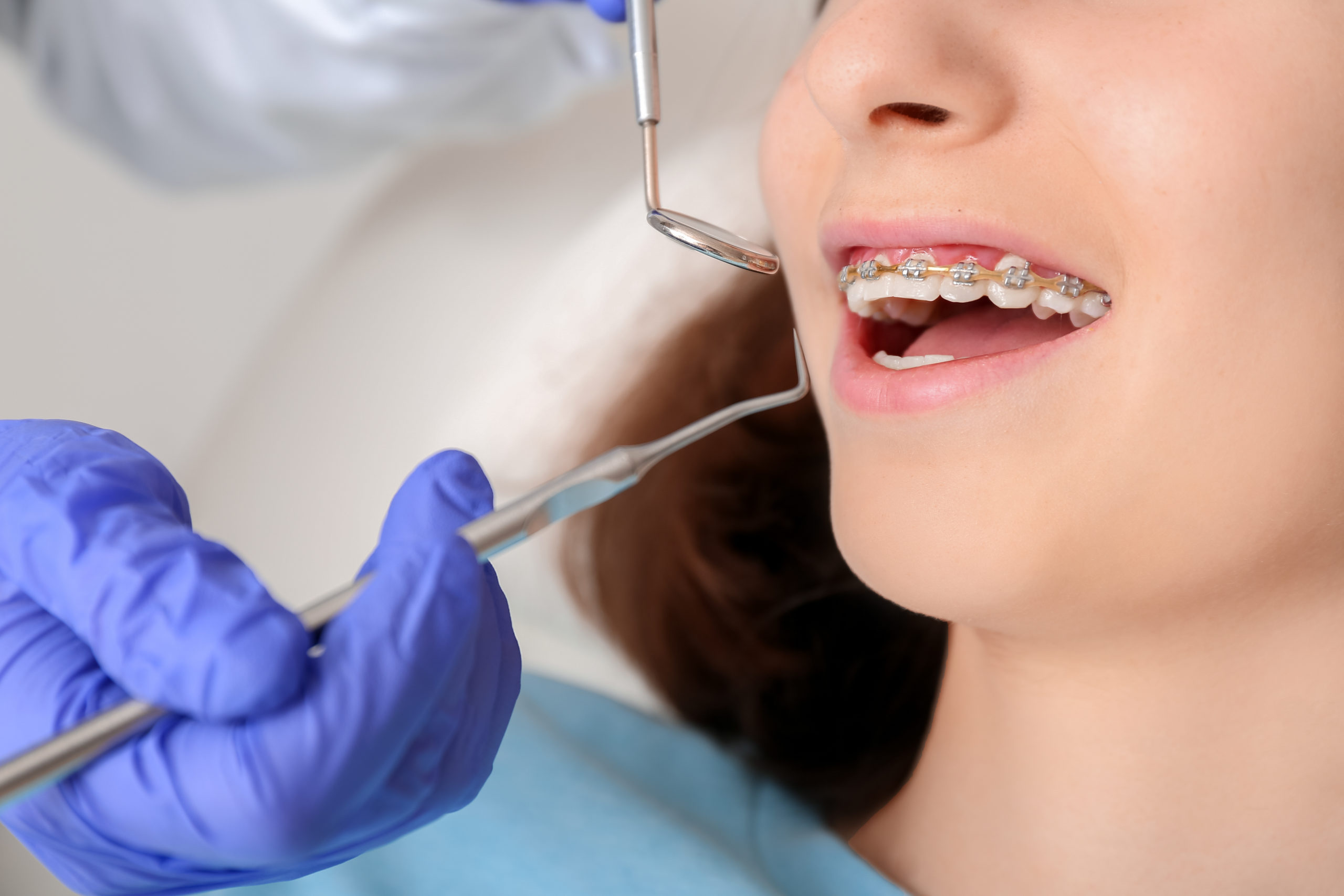How Cumming Orthodontics Can Transform Your Smile with Invisalign and Braces
How Cumming Orthodontics Can Transform Your Smile with Invisalign and Braces
Blog Article
Comprehensive Guide to Orthodontics Treatments for Correcting Dental Misalignments
In the world of orthodontics, the trip to accomplishing a flawlessly lined up smile includes a myriad of procedures customized to correct oral imbalances. From typical braces to unseen aligners and also surgical alternatives, the field of orthodontics uses a variety of services to resolve varying levels of dental irregularities. Recognizing the intricacies of each procedure, including their systems, benefits, and possible disadvantages, is essential in making educated choices concerning one's orthodontic therapy. As we browse via the thorough guide to orthodontic procedures for remedying oral misalignments, the elaborate details of each method will certainly unravel, losing light on the course towards a harmonious and useful oral placement.
Orthodontic Procedures Review

In addition to typical braces and clear aligners, orthodontists might additionally recommend other treatments like headgear, palatal expanders, or retainers to attend to certain positioning concerns (cumming orthodontist). These treatments are customized to each person's one-of-a-kind requirements and may entail a mix of treatments to achieve the wanted outcomes. Routine modifications and surveillance are critical parts of orthodontic treatment to make certain progression gets on track and to make any kind of required adjustments along the method. By undergoing orthodontic treatments, people can not only attain a straighter smile however additionally enhance their overall oral health and function.
Typical Dental Braces: Exactly How They Function
When thinking about orthodontic therapies for dental misalignments, conventional braces stand apart as a tried and true approach for dealing with teeth placing. Traditional dental braces include braces, cables, and bands that collaborate to apply continual pressure on the teeth, progressively moving them right into the wanted placement. The brackets are affixed to the teeth using an unique adhesive, and the wires are threaded with the brackets. By readjusting the stress of the wires, orthodontists can control the direction and force related to each tooth, guiding them right into appropriate alignment in time.
One key aspect of exactly how traditional braces work is the process of bone remodeling. As stress is put on the teeth through the dental braces, the bone surrounding the teeth is reshaped to sustain the brand-new tooth positions. This remodeling is crucial for the lasting security of the remedied placement. Patients will certainly need regular changes at the orthodontist's workplace to make sure the dental braces continue to use the right pressure for effective teeth movement.
Unseen Aligners: Advantages And Disadvantages
These clear, personalized trays are practically undetectable when put on, making them an appealing choice for people seeking a more cosmetically pleasing orthodontic therapy. Patients can get rid of the aligners before consuming or brushing their teeth, minimizing the threat of food obtaining stuck in the appliance and simplifying the cleaning procedure.

Surgical Orthodontic Options
Surgical treatments in orthodontics existing feasible choices for addressing intricate dental misalignments that might not be effectively resolved via standard orthodontic treatments. While look at here now standard dental braces and unnoticeable aligners can fix numerous orthodontic concerns, specific cases require medical intervention to attain ideal outcomes. Surgical orthodontic alternatives are typically recommended for extreme malocclusions, substantial jaw discrepancies, and situations where the underlying bone structure needs alteration to accomplish correct alignment.
One typical medical orthodontic treatment is orthognathic surgical treatment, which entails repositioning the jaws to fix practical problems such as trouble talking or chewing. This surgical treatment is frequently carried out in cooperation with an orthodontist who aids line up the teeth prior to and after the procedure. Surgical orthodontics may additionally include treatments to reveal affected teeth, get rid of excess gum cells, or improve the jawbone to create an extra unified facial profile.
Before taking into consideration surgical orthodontic alternatives, patients undertake an extensive assessment to establish the requirement and potential advantages of such interventions. orthodontist. While surgical procedure might seem difficult, it can dramatically improve both the feature and aesthetic appeals of the smile in cases where conventional orthodontic therapies fall short
Retainers and Post-Treatment Treatment

Failing to comply with post-treatment care guidelines can result in regression, where the teeth slowly relocate back towards their original settings. Consistent retainer wear, excellent dental health, and normal oral examinations are essential for maintaining the results accomplished via orthodontic surgical treatment and making sure the lasting stability of the remedied oral positioning.
Final Thought
In conclusion, orthodontic treatments provide numerous options for correcting dental imbalances. Surgical orthodontic options are available for extra severe misalignments. Generally, orthodontic treatments can effectively improve oral health and wellness and aesthetic appearance.
As we browse through the thorough overview to orthodontic treatments for correcting dental misalignments, the intricate information of each approach will unravel, dropping light on the course toward a harmonious and practical oral alignment. - cumming orthodontist
One of the most usual orthodontic therapies is the use of dental braces, which consist of metal brackets and wires that apply gentle pressure to progressively change teeth right into the desired placement.When taking into consideration orthodontic therapies for dental misalignments, conventional braces stand out as a time-tested technique for remedying teeth positioning. In addition, invisible aligners might not be ideal for complex orthodontic issues that call for more significant teeth movement, as same day dental implants they are commonly suggested for mild to moderate situations. Retainers are custom-made orthodontic tools designed to hold teeth in their corrected settings after the conclusion of orthodontic therapy.
Report this page